"The Dwarves tell no tale; but even as mithril was the foundation of their wealth, so also it was their destruction: they delved too greedily and too deep, and disturbed that from which they fled, Durin's Bane."
The Lord of the Rings (1954) by J. R. R. Tolkien
I learned about the Fairy Cave in the nearby town of Bau in my first year of working in Kuching but it wasn't until April 18 earlier this year that I could find the opportunity to see it for myself. The locals have named it Gua Pari with "gua" meaning "cave" and "pari" denoting "fairy". Pari can also mean "stingray", but I seriously doubt that that's the case here. The site is officially a natural reserve so a small fee is collected from every visitor for custodial maintenance.
The cave entrance was about 4 to 5-storeys up a sheer limestone cliff face and could only be accessed via a ugly free-standing concrete stairwell in dire need of a new coat of paint. On my ascent, I noticed that a smaller set of stairs was running closely to the rocks which I presumed was how tourists used to reach the cave mouth in the past.
 |
| Exercise. |
 |
| Safety? Is that some kind of small mammal? |
The Fairy Cave got its name because of its association to a Bidayuh local legend that tells of a village not too far away which once held a festival. Two orphans, drawn to the celebration and revelry, wanted to participate but the villagers made fun of them before chasing them away. For their heartless treatment of these orphans, it was said that they were struck with a curse that turned them all into stone figures.
That's what some of the more humanoid cave formations in the Fairy Cave were suppose to be - petrified jerkasses.
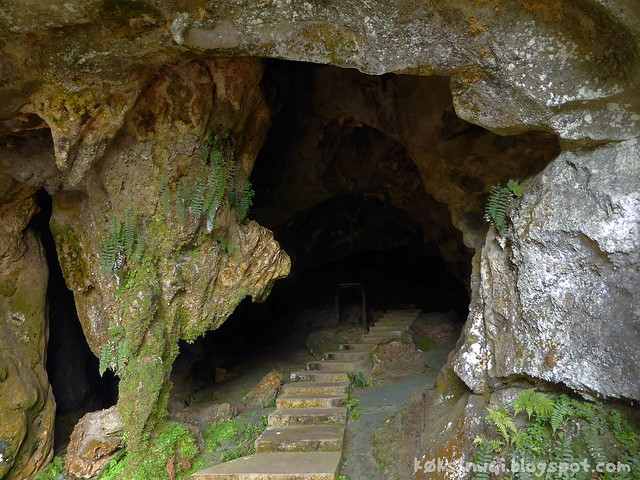 |
| The cave entrance. |
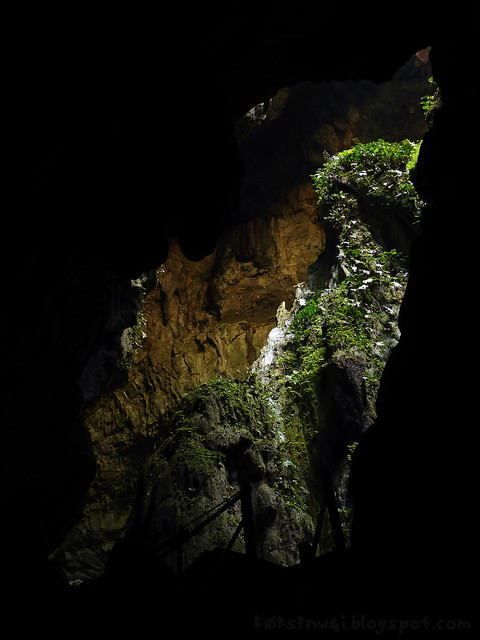 |
| After climbing some wet stairs through a dark tunnel, you get the first glimpse of something greater. |
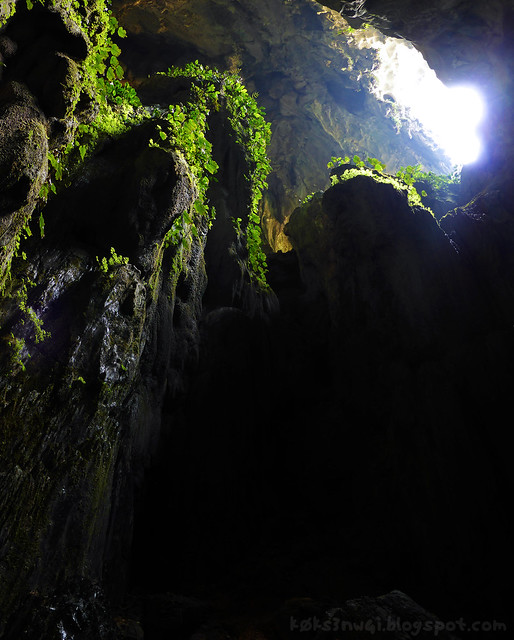 |
| Towering monolithic staglamites taller than houses and covered in vegetation nourished by the skylight. |
The tiny tunnel that formed the antechamber of the Fairy Cave could not prepare me for what awaits me at the end of the darkness. It was a very well-lit gargantuan chamber with soaring ceilings that disappear into shadows far above, giving me a religious awe that surpasses that of any cathedral. The incessant chittering of leather-winged chiropterans were audible but barely, emanating from the whatever lightless recesses the water-carved cavern conceal from sight. My later visits to the even more majestic caves in Mulu National Park would dwarf this experience but at this time, it was the largest cave I've ever seen. In fact, aside from the faint stench of guano flavouring the air, it was hard to believe that I was standing inside the hollow heart of the mountain. There was a very Lost World vibe to it.
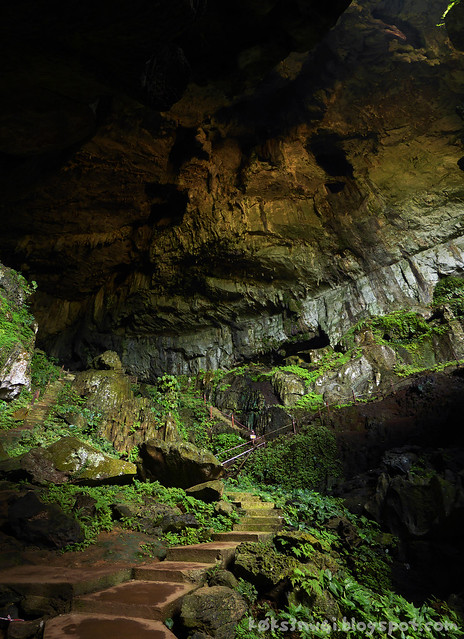 |
| The main chamber of Fairy Cave. |
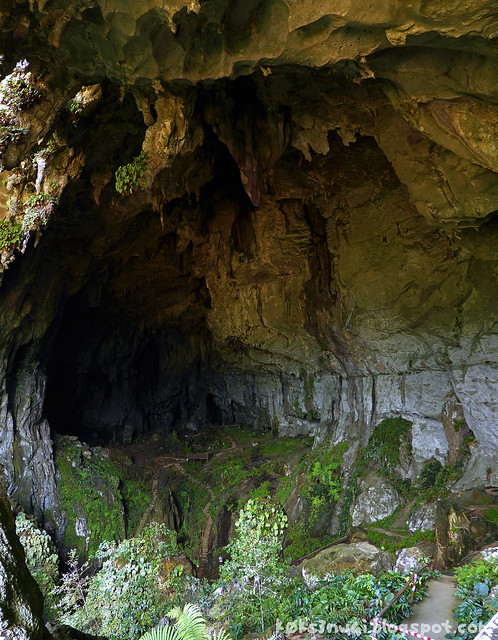 |
| View of the cave chamber from where the skylight is. |
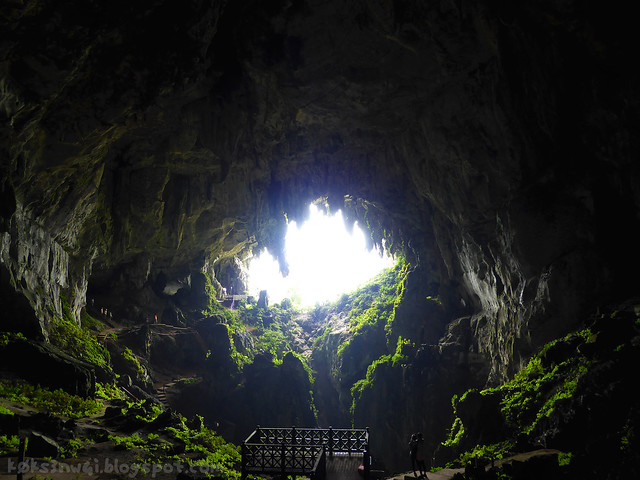 |
| View of the massive, Eye-of-Sauron-shaped skylight. |
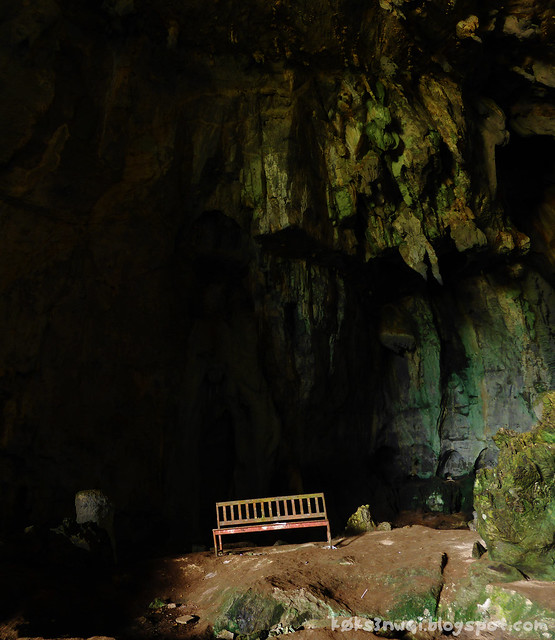 |
| A solitary bench near the back of the cave chamber. |
 |
| A concrete path leading into the darkness of the deeper chambers. |
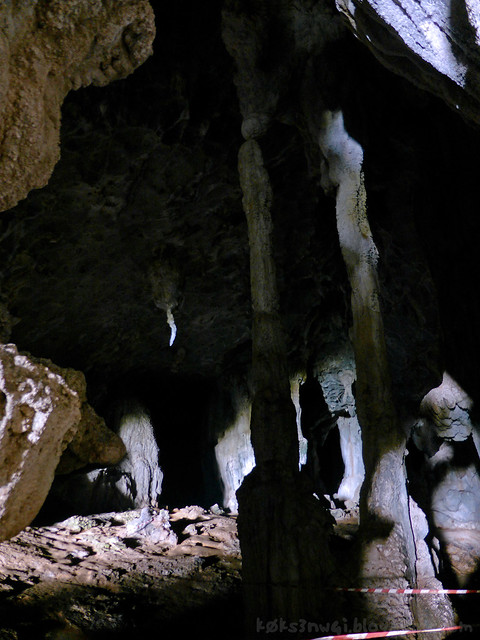 |
| The end of the concrete path. The tunnels go deeper but they were closed to visitors. |
Right at the centre of a cave, someone have placed the statue of an uncanny childlike figure adjacent to a huge rock. A white cap was placed on its head, a black robe was draped over its shoulders and a red sash encircled its waist. I have no idea what it is suppose to represent but I really didn't like the way it stares at me with its pupil-less, empty stone eyes. Near it was a green plaque embedded right into the rock. It read "Titisan Air Fairy", meaning Fairy Water Drops or Fairy Tears. My imagination started playing a vague weeping noise that seemed to dance just outside of the audible frequency. Quit spooking me, brain!
 |
| "Can I come home with you?" |
I didn't see any of the fabled fairies but I did spot a troll sucking greedily at his cigarette and letting his cancerous breaths waft about in the still cave air to find their way into the lungs of the young children who were also exploring the cave. After he was finished, he his cigarette butt nonchalantly into a pile of limestone formations. What is it with cigarette smokers that they can't even display the merest sense of consideration for other people?
 |
| A smelly, ugly troll. |
Unlike the caves at Mulu which were preserved in pristine conditions by the stringent rules the park authorities have laid down, the cave formations in Fairy Cave were unguarded and unprotected. Vandals can freely lay their grubby fingers on them, climb them or even pee on them, thoughtlessly disfiguring speleothems that took hundreds of thousands of years to form in just seconds. Some superstitious Chinese visitors even worships some of the humanoid-shaped stalagmites as the burnt out stems of joss sticks lying thickly at their bases can attest. Seriously, what the fuck is wrong with people?
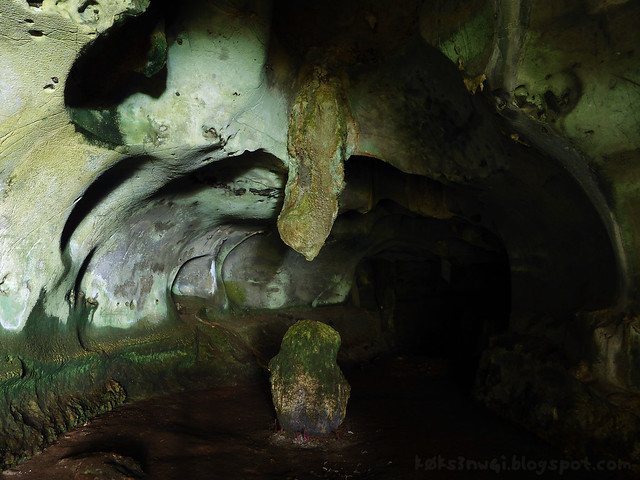 |
| Like a throat with a uvula dangling from the roof. |
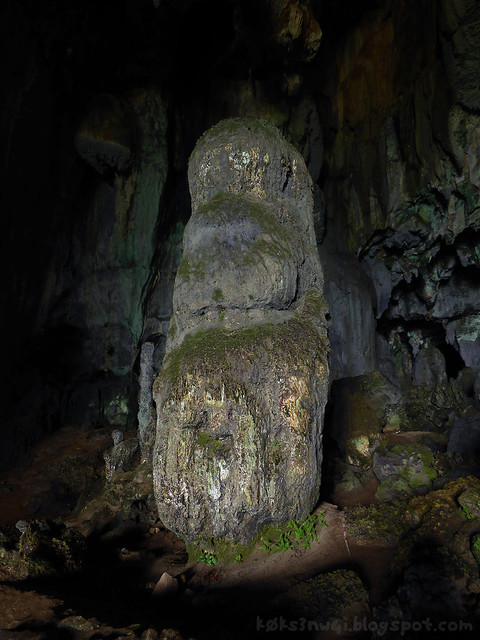 |
| A huge stalagmite that resembles the head of Shou (壽) with its high, domed forehead and beard. Shou is the Chinese deity of longevity. |
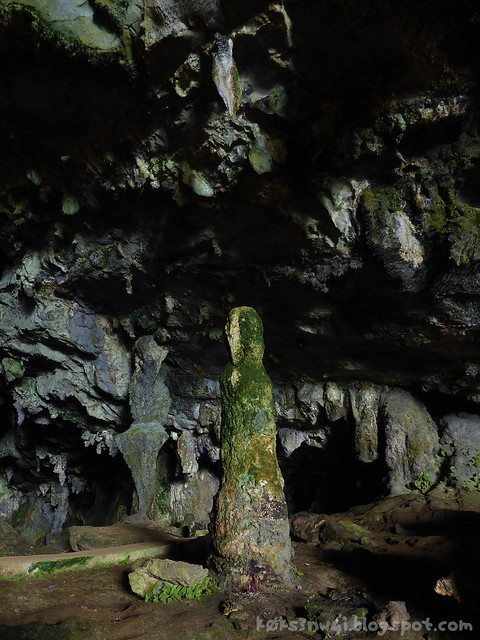 |
| I call this one Damocles and His Sword. |
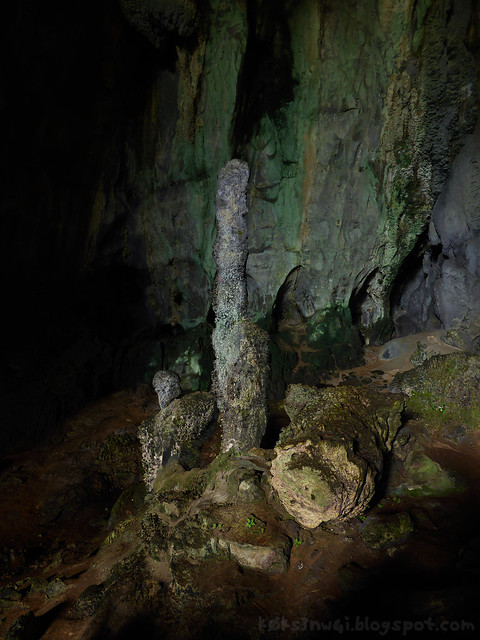 |
| I don't even know what this looks like but let's worship it too, just in case. |
Concrete paths and steps, and its well-lit interior made Fairy Cave an easy hole to explore - no torches are necessary. It is only about 30 minutes from Kuching (by driving, not by walking or riding a slow donkey) in a southwesterly direction. Finding it should be a cinch as many signboards point the way, and visitors often do the less famous Wind Cave at the same time - which I also visited but that's another blog post.
 |
| Overhanding mountainside near the Fairy Cave. |
Troglophile,
k0k s3n w4i

No comments:
Post a Comment